Pele is all about Passion, Power and Transformation.

Pele is the Goddess of Fire, Lightning, Wind, Hula and Volcanoes in indigenous Hawaiian mythology. She is also known as Pelehonuamea, “She who shapes the sacred land” – with her molten lava she both destroys and creates land.
Are you digging on her Creatrix/Destroyer energy, reminiscent of our dearest bad ass Inanna/Ishtar? As well as Neith and Athena? (Are you getting where this might be going yet? Hang with me for a moment. )
Pele’s transformational power links the first three chakras:
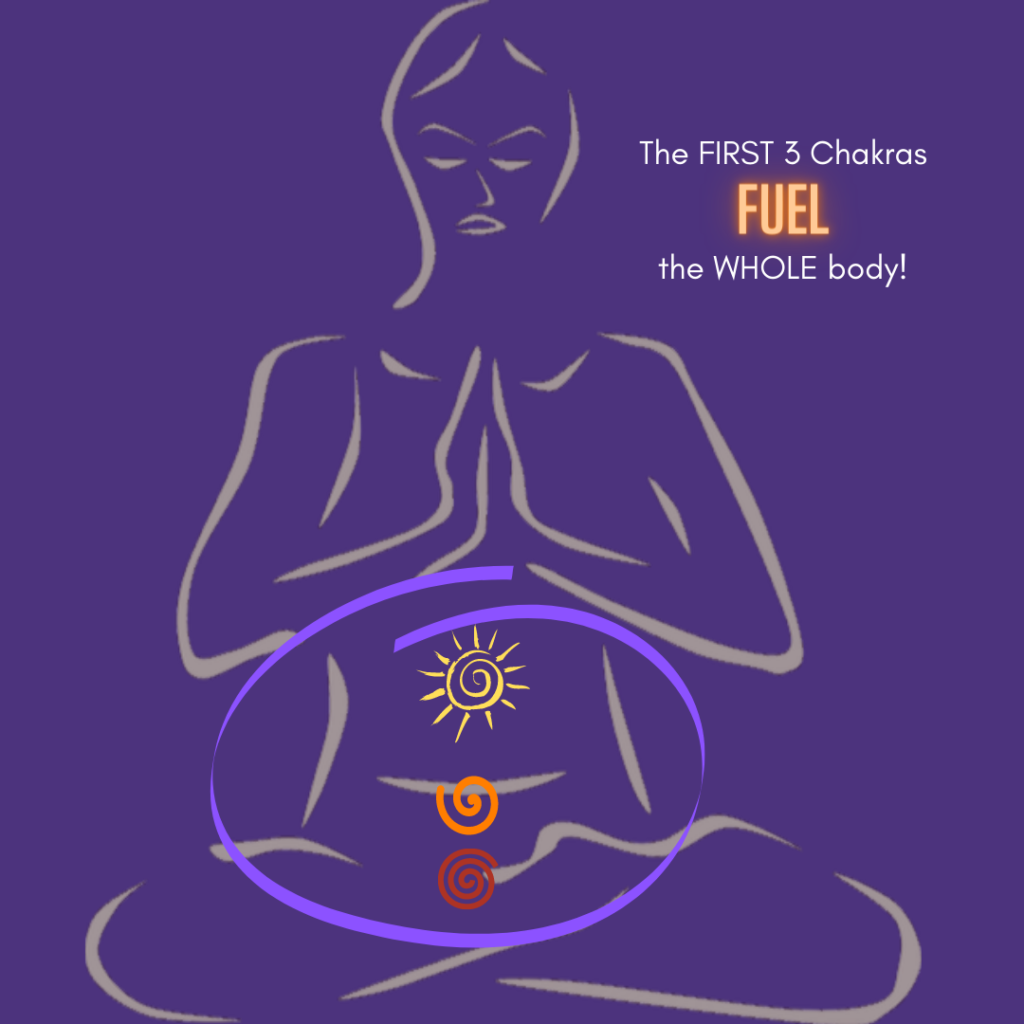
- her fiery, volcanic energy represents the Solar Plexus
- her flowing lava reflects the sensual Sacral Chakra
- her hardened lava reflects the earth and grounding of the Root Chakra.
With Pele’s transformational inspiration:
We will feel and move between the first 3 chakras to further integrate and strengthen this foundational power house that fuels the whole body.
The safety and grounding of the first chakra allows the Sacral Chakra to open and further allow Shakti energy to flow which nudges the fire of the Solar Plexus to ignite and steam the water of the Sacral chakra so you can:
* bring passion into your relationships
* transform your creative projects into form
* digest emotion and liberate yourself
* transform low self esteem into confidence
* self-conceive yourself into your empowered self
Sacred Geometry Focus:
![[The Sun, as seen from low Earth orbit overlooking the International Space Station By NASA - Image uploaded as ISS028-E-005671., Public Domain, https://commons.wikimedia.org/w/index.php?curid=15324047]](https://mcusercontent.com/dfdee310e64a6b8e9d339e680/images/430c3436-d461-4bad-9889-bc5223358bb4.jpg)
To deepen our connection to and activate these first 3 chakras, we will access the energy radiating spherically around each chakra, like the solar energy does all around the sun, and focus on specific points, like the:
* perineum
* cervix
* center of the womb
* 2 ovaries
* point that is 2 inches above the belly button
Though we are 3 dimensional beings (moving to the 5th Dimension!) we tend to forget that each point in our body emanates energy spherically around itself.

It’s definitely a mind-bender to start to explore and feel that spherical energy from each point and to then expand it as we lengthen and move!
But it is a total game changer to build energy and create tremendous space in the body (and to help relieve pain.)
I will break it down so that it is doable and not overwhelming. We will work with this incrementally, step by step.
This is not for the uncommitted! This is totally warrior training and we will revisit it often as it is a great step to expanding your ability to work with your energy field within and around you.
Are you up for the challenge?
Regardless of how well you can do this, or choose to focus on this in class is not important. Come and feel the sensations in your body and connect to these first three chakras- that is plenty! The more you feel, the more you awaken your chakras, and allow energy to move through them.
The invitation is always open to take class the way it is best for you. But I do like to challenge you even more if you are up for it! Feeling is challenge enough! Since we are not encouraged to do so, in general.
BACK to what I was hinting at above…..(not essential to read for Class! But if you’re curious, geek out with me!)
I’ve started to notice that the creatrix/destroyer qualities seem to be a marker for potential parthenogenesis.

Makes sense, since the ability to self-conceive life wields the power of life and death. Lo and behold, I have unearthed some intriguing inklings of parthenogenesis in Pele.
Surprised? Not! Stick with me, and you’ll start recognizing them yourself– they seem to be tucked away in plain sight–everywhere!
Clue #1: When I first read of Pele, only her mother, Haumea, was named. Haumea is the goddess of Fertility and Childbirth, no less, and with no mention of Dad… sure sign of the big ‘P.’ But as I read on, in different myths, she has different fathers.
Often in myths, a father’s name is mentioned but it’s like an after thought- if they have no other part to play in the myth, it’s likely a patriarchal overlay inserted into a more recent version of the myth. This beckons us to imagine the older versions of the myths that were born in the matriarchal era of the culture. Hawaii like Polynesia (and most of the world, if not all of the world!) was originally a matriarchal culture.
Her father does play a part in Pele’s expulsion from Tahiti, but because he seems to have different names in different versions while, her mother, seems to be consistently named, for the most part, Hawmea–this may point to matriarchy rather than parthenogenesis.
Clue #2: In myths of Pele’s journey from Tahiti to Hawaii, Haumea entrusts an egg to Pele, to keep safe under her breast. After a life-threatening, treacherous journey to Hawaii, Hi’iaka, Pele’s younger sister is finally born, emerging from the egg.
Some myths state Hi’iaka was conceived by both Haumea and Kane, her alleged father, but as we are learning about patriarchal overlays, being born unusually, like from an egg, puts us on potential ‘P alert.’
In fact, Marguerite Rigoglioso mentions a similar ‘egg myth:’
“Into the Euphrates River, an egg of wonderful size is said to have fallen, which the fish rolled to the bank. Doves sat on it, and when it was heated, it hatched out Venus [Ashtarte, the Syrian Aphrodite.]” Pseudo-Hyginus, Fabulae 197 (trans. Grant) (Roman mythographer C2nd A.D.)
She believes, the myth “may be a vestige of a more ancient story in which [the Goddess] Dione-as-dove gave birth to Aphrodite in pure parthenogenetic fashion.”* (Where a Mother self-conceives a Daughter eg. Mohawks’ Sky Woman.) *Rigoglioso, Cult of Divine Birth, p.148
I had a feeling Aphrodite had some Parthenogenetic connections! This is an interesting egg story to compare with Hi’iaka, wouldn’t you say?
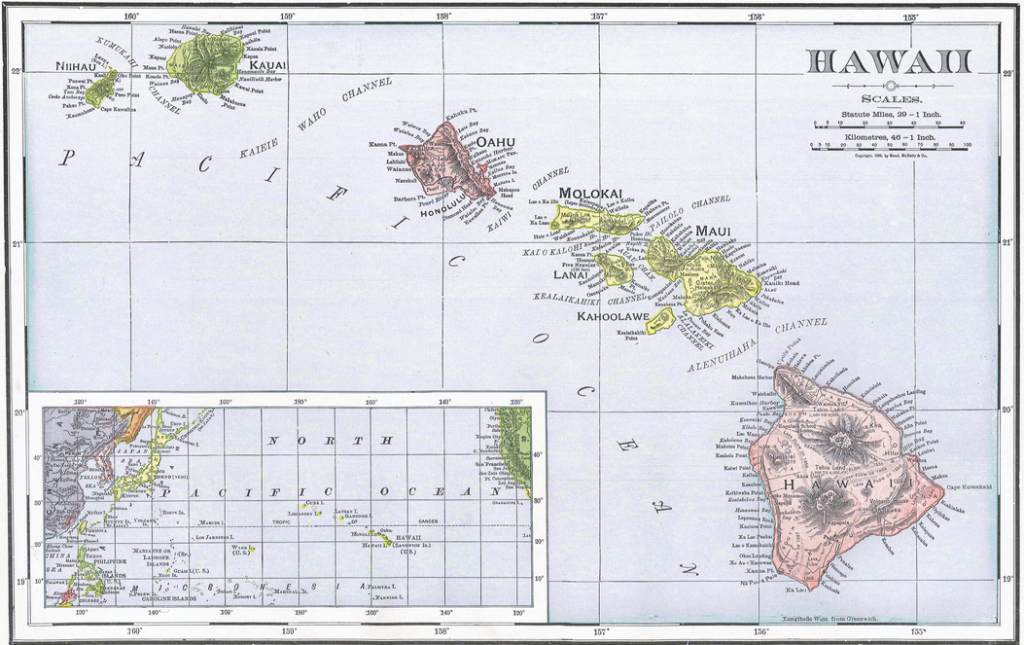
I, personally, find it interesting that Pele is the one to incubate the egg during a very long, harrowing journey from Tahiti all the way to Hawaii and then through the various Hawaiian islands where each time she tried to light a fire, her older sister, Namaka, chased her and tried to kill her! That she succeeds in keeping the egg safe enough to hatch is some extra strength super-power right there.
[Chromolithograph of the Hawaiian Islands 1899, By Rand McNally – Private collection, Public Domain, https://commons.wikimedia.org/w/index.php?curid=97715467]
Hi’iake’s full name is, Hiʻiaka-i-ka-poli-o-Pele: “Embryo/Egg carried in the bosom of Pele”. It feels like this points to a hybrid, joint Mother/Daughter parthenogenetic process!
Clue #3: This is not really a parthenogenetic myth, however, it’s so wild and yoni-powered, that it has to be mentioned. Pele was in danger of being raped by the God, Kama-pua’a, who was half man, half boar. Not Pele’s brothers, but Kapa, her sister, senses Pele’s danger and responds by detaching her Vulva and sending it to the rescue!
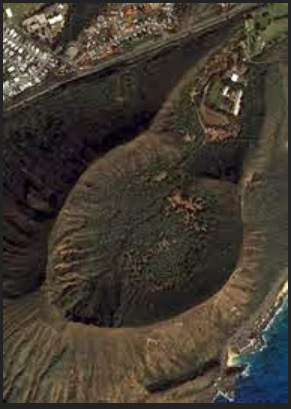
Just as Kama-pua’a was about to pounce on Pele, he sees Kapa’s flying vulva – Kohe Lele (I coudn’t make this up even if I tried!) Kama-pua’a chases her Kohe Lele all the way from the big Island to Oahu where it crashed violently onto the island, with such force it created the enormous crater trapping the sex offender pig god in the center.
According to legend, Pele lives in Halemaʻumaʻu of Kīlauea in Hawai’i Volcanoes National Park
Now that Pele is safe, Kohe Lele returns back to Kapo! What a smart Yoni!
This is the legend of how the beautiful crater on Oahu was made. It was originally called Kohelepelepe, which means “labia minor” in Hawaiian, but since the missionaries arrived it is now known as Koko crater- which means blood!

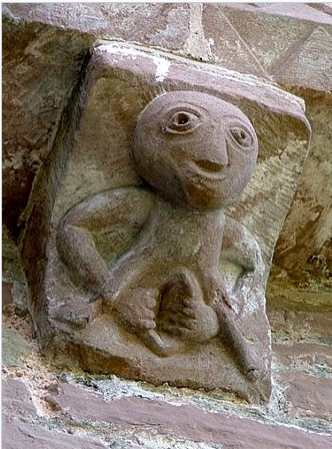
Kapo’s Kohe Lele- is reminiscent of the Sheela Na Gigs in Ireland and sprinkled throughout Europe. The apotropeic power of the vulva for protection is the same though used differently. Kapo uses her vulva to protect Pele by seducing and mesmerizing and ultimately trapping her aggressor.
A 12th-century sheela na gig on the church at Kilpeck, Herefordshire, England By The original uploader was Pryderi at English Wikipedia. – Transferred from en.wikipedia to Commons., CC BY-SA 3.0, https://commons.wikimedia.org/w/index.php?curid=2138106
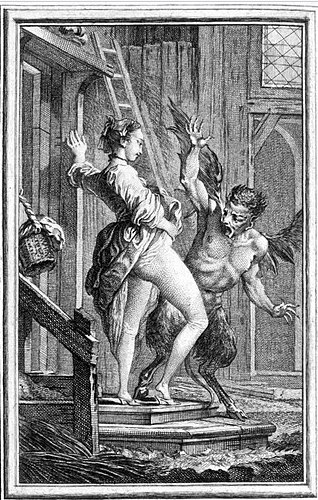
Whereas Sheela Na Gig’s were used to scare people away with the power of exposing the Vulva. More to be explored here.
La Fontaine plate illustrated By Charles Dominique Joseph Eisen 1762- https://archive.org/details/talesnovelsinver02lafoiala, Public Domain, https://commons.wikimedia.org/w/index.php?curid=11447966
Conclusion: Most of the myths involve Pele and her sisters and the brothers are are not as highlighted. All of these clues may not prove Parthenogenesis, but they do show a strong matriarchal imprint. Not to say the brothers should not be mentioned more but it is refreshing that the women are very much in the foreground, unlike women in later versions of Greek myths.
Though Pele escaped from rape thanks to Kapo’s yoni power, unlike the many victims of rape in later patriarchal Greek myths, it is definitely a sign that patriarchy starts to move into Hawaiian mythology.
There are many more interesting myths involving Pele and her sisters! The themes of fertility, sexuality, dance, anointing, herbal medicine, and magic seem to abound which reflects the veneration of matriarchal values. Though not entirely surprising, given the softness and nature-filled lifestyle of Hawaii, but truly a delight to discover. I will add more as I do more research in the future.
I look forward to embracing Pele’s transformational power as we deepen into the first 3 chakras and letting it dance through us in Womb Power!
I hope you’ll join us this, Thursday March 18th, 5-6:30 pm PT.
If you’d like to register or invite friends, you can join here.






